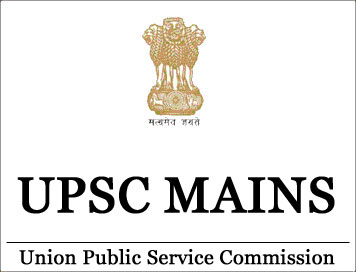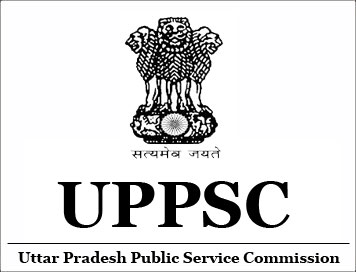
(Download) UPSC IAS Mains 2015: English (Paper -1 & Paper-2) Literature Subjects Paper
Subject: English (Paper -1 & 2) Literature Subjects
Exam Date: 23rd December 2015
English Literature (Paper-1)
SECTION-A
1. Write short notes on each of the following. Each question should be answered in about 150 words: 10x5=50 marks
(a) Postcolonial Reading of The Tempest. 10 marks
(b) Paradise Lost tries to “justify the ways of God to man”. Comment. 10 marks
(c) Revolutionary Spirit in English Romantic Poetry. 10 marks
(d) Examples of any two conceits from Donne’s poems. 10 marks
(e) Victorian compromise in “In Memoriam”. 10 marks
2.(a) Analyse the psyche of “illegitimate” Edmund with reference to the plot of King Lear. How does he try to overturn his destiny and with what success ? 15 marks
(b) In what ways did John Donne break away from the contemporary poetic traditions which made him so original and different ? Write a reasoned answer with illustrations from the text. 20 marks
(c) How does Alfred Tennyson handle nature in In Memoriam. 15 marks
3. (a) Do you think that the great theme of Paradise Lost is unquestioning obedience to the behests, implicit in the creative order, of an omnipotent God ? Discuss in the light of the contemporary Puritan philosophy. 20 marks
(b) Would you consider that the exposure of immoderate female vanity is the motivating impulse behind The Rape of the Lock. Justify your answer with proper evidence(s) from the text. 15 marks
(c) Comment on the role of Torvald Helmer in A DolL's House. Why do you think he is taken by surprise at Nora’s rebellion ? 15 marks
4.(a) Discuss the relationship of ‘Man’, ‘Nature’ and ‘Society’ with reference to the poems of William Wordsworth prescribed in your syllabus. 15 marks
(b) Present a feminist reading of A DolL's House. 20 marks
(c) The Rape of the Lock demonstrates “What mighty contests rise from trivial things” ? Discuss. 15 marks
SECTION-B
5. Study the following poem and answer the questions which follow. Each answer should be in around 60-80 words : 10x5=50 marks
Give me more love, or more disdaine; The Torrid, or the frozen Zone, Bring equall ease unto my paine; The temperate affords me none : Either extreame, of love, or hate, Is sweeter than a calme estate.
Give me a storme; if it be love, Like Danae in that golden showre I swimme in pleasure; if it prove Disdaine, that torrent will devoure My vulture-hopes; and he’s possest Of Heaven, that’s but from Hell releast: Then crowne my joyes, or cure my paine; Give me more love, or more disdaine.
(a) Consider the implications of the line - “Give me more love, or more disdaine”; and comment. 10 marks
(b) What sort of person, do you think, is the speaker of the poem ? 10 marks
(c) Critically comment on the imagery of ‘The Torrid’ and “the frozen Zone”. 10 marks
(d) Explain the lines- “Give me a storme; if it be love, Like Danae in that golden shower I swimme in pleasure;” 10 marks
(e) Explain - “and he’s possest Of Heaven, that’s but from Hell released” : 10 marks
6.(a) Discuss Gulliver's Travels as a tale with an element of the ridiculous and the fantastic which has a universal appeal. Elaborate 15 marks
(b) In Pride and Prejudice first impressions, illusions and subjective opinions give way to attachment, balance, reasonableness and, more painfully to humiliating reassessments. Discuss. 20 marks
(c) Dr Johnson called Tom Jones an “immoral text”. Would you agree ? Write a reasoned answer. 15 marks
7.(a) In Tom Jones, Fielding’s scathing satire is reserved for the London upper classes. Discuss. 15 marks
(b) The novel Hard Times depends on the opposition between Fact and Fancy, the contrast which gives it both tension and unity. Discuss. 20 marks
(c) The Adventures of Huckleberry Finn shows the growth of consciousness of an innocent young orphan into an adolescent who understands the evil world around him. Discuss. 15 marks
8.(a) Discuss the significance and relevance of the sub-title “A Pure Woman” appended by Thomas Hardy to Tess of the /)’ Urbervilles. How did the debate reveal the attitudes of Victorian society towards morality ? 15 marks
(b) How do patriarchist rules control and define the life of Maggie Tulliver in Mill on the Floss ? Discuss. 20 marks
(c) How does Mark Twain address the question of slavery in Huckleberry Finn ? Discuss. 15 marks
English Literature (Paper-2)
SECTION-A
l. Critically comment on the following passages in their contexts in about 150 words each :- 5x10=50 marks
(a) All changed, changed utterly : A terrible beauty is bom. (W.B. Yeats) 10 marks
(b) I have heard the mermaids singing, each to each I do not think that they will sing to me. (T.S. Eliot) 10 marks
(c) Was he free ? Was he happy ? The question is absurd : Had anything been wrong, we should certainly have heard. (W.H. Auden) 10 marks
(d) This was Mr. Bleaney’s room. He stayed The whole time he was at the Bodies, till They moved him. (Philip Larkin) 10 marks
(e) The new poets still quoted the old poets, but no one spoke in verse of the pregnant woman. (A.K. Ramanujan) 10 marks
2. Answer all of the following :- 15+15+20=50 marks
(a) Auden asserts in “The Memory of W.B. Yeats” that poetry is a purely aesthetic and not an ethical or religious practice. Discuss. 15 marks
(b) What do the images, “Astride of a grave and a difficult birth; down in the hole, lingeringly, the gravedigger puts on the forceps; we have time to grow old” suggest in Waiting for Godot ? 15 marks
(c) All Yeats touched he turned into symbols : Ireland, Byzantium, Maud Gonne, The Easter Rising, The Tower — Discuss. 20 marks
3. Answer all of the following :-15+15+20=50 marks
(a) Examine Philip Larkin’s bleak view of human life and relationship with reference to his poems. 15 marks
(b) Discuss Eliot’s religious-philosophical reflections on time and consciousness in “Burnt Norton”. 15 marks
(c) Deconstruction is not synonymous with destruction, it is in fact closer to the original meaning of the word, “analysis” which originally means to undo. Discuss. 20 marks
4. Answer all of the following :- 15+15+20=50 marks
(a) Discuss how Jimmy’s frenetic quest for real life destroys the lives of those to whom he is closest. 15 marks
(b) The mother figuring in Ramanujan’s poem: becomes a representative of all that is left behind, lost and never found. Discuss. 15 marks
(c) The characters in Waiting for Godot go on ; in the universe of this play “go on” leads no where — Elucidate. 20 marks
SECTION-B
5. Write short critical notes on the following in about 150 words each :— 5x10=50 marks
(a) The novel, A Portrait of the Artist as a Young Man, is structured in the manner of a classical drama. 10 marks
(b) “Oedipus complex” as the basis of Sons and Lovers. 10 marks
(c) Mrs. Dalloway is constructed in terms of the two dimensions of space and time. 10 marks
(d) Ratna [Kanthapura] is a symbol of some aspects of the social injustice done to women. 10 marks
(e) Naipaul’s use of imagery and symbolism to enhance the meaning of his novel A House for Mr. Biswas. 10 marks
6. Answer all of the following :— 15+15+20=50 marks
(a) How does Conrad depict the difficulty of finding a secure moral base in the ambience of political violence, economic oppression, isolation and existential dread in Lord Jim ? 15 marks
(b) Lawrence’s writings transcribe the most elusive sensations and emotions — the moments of life of men and women and in the physical world of nature. Discuss. 15 marks
(c) Forster’s Passage to India exists on two plains and it has different meanings on different plains. Elaborate. 20 marks
7. Answer all of the following :— 20+10+20=50 marks
(a) Joyce freed himself from socially structured emotions — by means of creating art as a new religion he detached fiction from one particular ideological base. Discuss with reference to Portrait of an Artist as a Young Man. 20 marks
(b) Describe Naipaul’s depiction of humour in raucous scenes of life in Mr. Biswas’s career and in the language of the characters. 10 marks
(c) With something of the passion of the mystic Virginia Woolf in Mrs. Dalloway values reality of the perceptive moment and of inner wonder. Elaborate. 20 marks
8. Answer all of the following :— 20+15+15=50
(a) How does the narrative of Kanthapura establish the parameters of the story within old and new legends ? 20 marks
(b) How does E.M. Forster portray the common racial tensions and prejudices between the Indians and the British in his A Passage to India ? 15 marks
(c) Argue why Lord Jim is considered the Hamlet of Joseph Conrad. 15 marks





